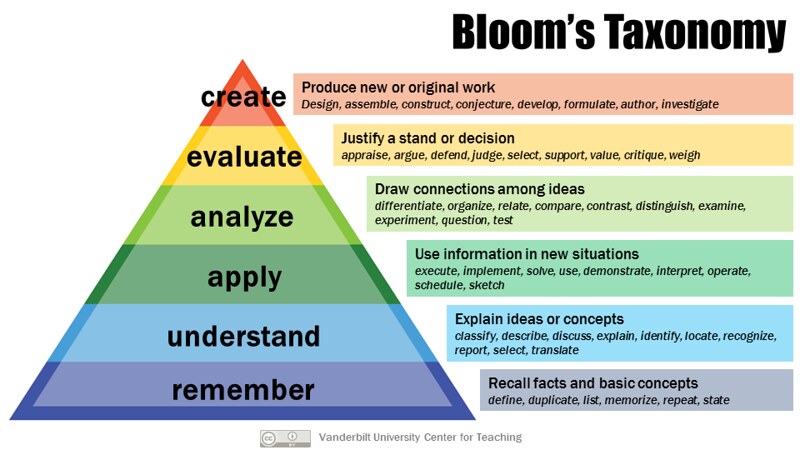7 Social, Emotional, and Cognitive Theories
Alexandria Lewis

This section provides an overview of human development theories including psychosocial, emotional, cognitive, and behavioral theories. Some of these are highlighted in the section across the life span (e.g., infants, toddlerhood and early childhood, middle childhood, adolescence).
I. Human Development, Diversity, and Behavior in the Environment
1A. Human Growth and Development
KSAs: Theories of human development throughout the lifespan (e.g., physical, social, emotional, cognitive, behavioral)
Psychosocial Development
Is there a 9th stage to Erikson’s Psychosocial Stages of Development?
After Erik Erikson died, his wife (Joan) used their notes to update the stages to include a 9th stage pertaining to old age (80 years and older). The Life Cycle Completed Extended Version was published in 1998, but I rarely see updates incorporated into textbooks about the 9th stage. Therefore, it is unlikely the exam includes questions/items about the 9th stage.
According to Erikson, from birth to old age, we encounter challenges that create conflict. Mastering these conflicts enhances one’s identity and results in adaptation that is healthy (Hutchison, 2017; Shraev, 2017); virtues (strengths) can be developed for each stage. Development occurs throughout the life span. Erikson related his psychosocial development theory to the epigenetic principle. We could view this principle as a ladder whereby we climb each rung of the ladder in order from infancy to old age.
“Identity formation neither begins nor ends with adolescence; it is a lifelong development largely unconscious to the individual and to his society.” – Erik Erikson
Self-Check
Note: There is additional context provided in the comments of the correct answers.
Psychosocial Stages
Source of the following content: 2.3: Psychosocial Theory is shared under a CC BY 4.0 license and was authored, remixed, and/or curated by Laura Overstreet.
- Trust vs. mistrust (0-1): the infant must have basic needs met in a consistent way in order to feel that the world is a trustworthy place.
- Autonomy vs. shame and doubt (1-2): mobile toddlers have newfound freedom they like to exercise and by being allowed to do so, they learn some basic independence.
- Initiative vs. Guilt (3-5): preschoolers like to initiate activities and emphasize doing things “all by myself.”
- Industry vs. inferiority (6-11): school-aged children focus on accomplishments and begin making comparisons between themselves and their classmates
- Identity vs. role confusion (adolescence): teenagers are trying to gain a sense of identity as they experiment with various roles, beliefs, and ideas
- Intimacy vs. Isolation (young adulthood): in our 20s and 30s, we are making some of our first long-term commitments in intimate relationships
- Generativity vs. stagnation (middle adulthood): from the 40s through the early 60s, we focus on being productive at work and home and are motivated by wanting to feel that we’ve made a contribution to society.
- Integrity vs. Despair (late adulthood): we look back on our lives and hope to like what we see that we have lived well and have a sense of integrity because we lived according to our beliefs.
These eight stages form a foundation for discussions on emotional and social development during the life span. However, remember that these stages or crises can occur more than once. For instance, a person may struggle with a lack of trust beyond infancy under certain circumstances. Erikson’s theory has been criticized for focusing so heavily on stages and assuming that completing one stage is a prerequisite for the next crisis of development. His theory also focuses on the social expectations that are found in certain cultures but not in all. For instance, the idea that adolescence is a time of searching for identity might translate well in the middle-class culture of the United States but not as well in cultures where the transition into adulthood coincides with puberty through rites of passage and where adult roles offer fewer choices.
Video Resource
Theories of emotion
There are diverse perspectives about emotions, and there is much we do not know about emotions and our brains. Also, our cultural experiences, including parents/caregivers, shape our emotional development (Hutchison, 2017). While test-takers do not need to know in-depth information about the brain, understanding key aspects of the brain will help connect to different KSAs.
There are different definitions/explanations for the word “emotion”; this word is challenging to operationalize.
- Merriam-Webster (n.d.) defines emotion as, “the affective aspect of consciousness; a state of feeling; a conscious mental reaction (such as anger or fear) subjectively experienced as strong feeling usually directed toward a specific object and typically accompanied by physiological and behavioral changes in the body.”
- Hutchison (2017) indicated emotion is: “understood as a feeling state characterized by our appraisal of a stimulus, changes in bodily sensations, and displays of expressive gestures” (p. 92).
Are emotions the same as affect?
While these terms are sometimes used interchangeably, it is important to note the difference. Affect is the manifestation of an emotion (observed).
Merriam-webster defines affect as “a set of observable manifestations of an experienced emotion: the facial expressions, gestures, postures, vocal intonations, etc. that typically accompany an emotion” (Merriam-Webster, n.d.).
Cognitive development
Self Check
Piaget Cognitive Development
Source of the following content: 2.5: Exploring Cognition is shared under a CC BY 4.0 license and was authored, remixed, and/or curated by Laura Overstreet.
Stages of Cognitive Development
Piaget outlined four major stages of cognitive development. For about the first two years of life, the child experiences the world primarily through their senses and motor skills. Piaget referred to this type of intelligence as sensorimotor intelligence. During the preschool years, the child begins to master the use of symbols or words and is able to think of the world symbolically but not yet logically. This stage is the preoperational stage of development. The concrete operational stage in middle childhood is marked by an ability to use logic in understanding the physical world. In the final stage, the formal operational stage the adolescent learns to think abstractly and to use logic in both concrete and abstract ways.
Criticisms of Piaget’s Theory
Piaget has been criticized for overemphasizing the role that physical maturation plays in cognitive development and in underestimating the role that culture and interaction (or experience) play in cognitive development. Looking across cultures reveals considerable variation in what children are able to do at various ages. Piaget may have underestimated what children are capable of, given the right circumstances.
Video Resource
| Age Range | Stage | Substage* | Highlights |
| 0-2 years | Sensorimotor |
|
|
| Birth-1 month | Substage 1
Reflex Activity |
|
|
| 1-4 months | Substage 2
Primary circular reactions |
|
|
| 4-8 months | Substage 3
Secondary circular reactions |
|
|
| 8-12 months | Substage 4
Coordination of secondary circular reactions |
|
|
| 12-18 months | Substage 5
Tertiary circular reactions |
|
|
| 18 months-2 years | Substage 6
Mental representation |
|
|
| 2-7 years | Pre-operational |
|
|
| 2-3 years | Substage 1
Preconceptual |
|
|
| 4-7 years | Substage 2
Intuitive |
|
|
| 7-11 years | Concrete Operations |
|
|
| 11 through maturity | Formal Operations |
|
Hutchison, E.D. (2017). Essentials of human behavior: Integrating person, environment, and the life course. SAGE Publications, Inc.
Levels of cognition & Bloom’s Taxonomy

The Bloom cognitive levels were updated in 2001; however, since there are outdated questions (items) on the exam, I contrast both versions as a resource.
| 1956 | 2001 |
| 1. Knowledge | 1. Remember |
| 2. Comprehension | 2. Understand |
| 3. Application | 3. Apply |
| 4. Analysis | 4. Analyze |
| 5. Synthesis | 5. Evaluate |
| 6. Evaluation | 6. Create |
Video Resource

